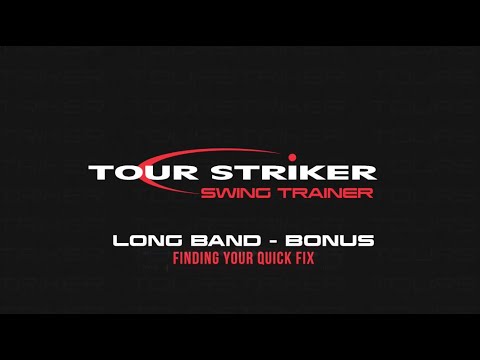In Long Band Bonus 3, Martin Chuck breaks down how to recover from a poor round using your Swing Trainer. Whether you’re battling slices or hooks, this post-round protocol will help you self-correct by improving path, face control, and body awareness. Build confidence, refine your swing, and prep for your next round with purpose.
✅ Learn more or get yours here: https://shrsl.com/4wt4e
SUBSCRIBE to Tour Striker Tips: http://bit.ly/2rExev1
[Music] hey guys what happens if you have a bad round you know you have a bad round and it’s like “Oh man I really didn’t hit it the way I wanted to hit it.” Well so many things go into the decision making of hitting shots on the golf course club selection emotions all the commitment the routine all those things i go into all that stuff in my golf school and there’s probably a lot of stuff on YouTube you can Google my name and search i try to publish that stuff to be helpful but how is it going to help you with your swing trainer look let’s say for example you know you went out you trained with your swing trainer but yet you still sliced the golf ball well whenever you slice the golf ball you have an open face to path situation so the path where this club is swinging if this is my target line so my target my toolbox is set up I’d say oh about a foot away from my invisible target line here’s a club traveling across my target line from out to in this club face is still very square which means the ball always starts where the face is pointed but since the club’s traveling across that target line you’re going to get the friction of a cut and a lot of people struggle with a fade let’s be candid but what you’re learning with your swing trainer is how the golf club can start to go behind you so that the orbits inside out so you have more of a pure path that reduces that possibility of that friction now maybe you’re a a better lower handicap golfer and maybe you’ll have too much of the behavior where the club gets behind you and swings too inside out you can be one or the other typically you know the teeter totter goes too much to hookie biases or faty biases now if you’re the slicer go and you have time after your round and you can hit 20 or 30 golf balls I would go to your station on the range set up an alignment and just work through the sensation of width and elevation without losing the tension in the band and let that connector start to work behind you and even stop and look and look at how the connector is behind you as you pivot there’s nothing about that that’s coming over the top hit a few shots as you do that maybe eight 10 balls with your swing trainer uncip it grab a club one up the set one down the set and see if you can definitely have the confidence that you’ve made that change and you’re mentally satisfied you’ve fixed it ready for your next round now conversely say you had too many hooks and you had things that were missing for the right-handed golfer excessive curve to the left well quite often what happens is the body gets in the way and the good player uses the hands too much the face is therefore close to the path and the ball goes to the left for the better players we don’t necessarily need that behavior as much because it’s already baked in we need the feeling of keeping tension on the band longer how we keep tension on the band longer to stay wider and even put in some fad biases meaning right now I have tension in the band it’s at a dress i’ve got that push pressure i still want everything high and wide but rather than let the club get behind me to have the feels of hitting big draws or a draw for the first time if you’ve always been a slicer I keep that tension in and use more rotation so the club face is a bit more stable through that impact so I’m if I had to pour round I might say “Okay I’m going to hit 10 balls being very mindful of width and radius.” And I’d probably hit a few of these with the intent of hitting a fade so let me hit one and so that’s me really using a lot of core and rotation to have face stability for a golf ball that flew pretty straight and actually bade to the right so if you get into the stall flip of a better player because your body gets in the way now we can keep tension on the band keep rotating without any sort of immature overtaking of the hands and have that club delivery that can give you that reliable ball flight so post round if you have a few minutes I would suggest whatever your issue is whether it’s too much fade bias too much hook bias spend a few minutes so when you leave the course you’re confident looking forward to your next round







